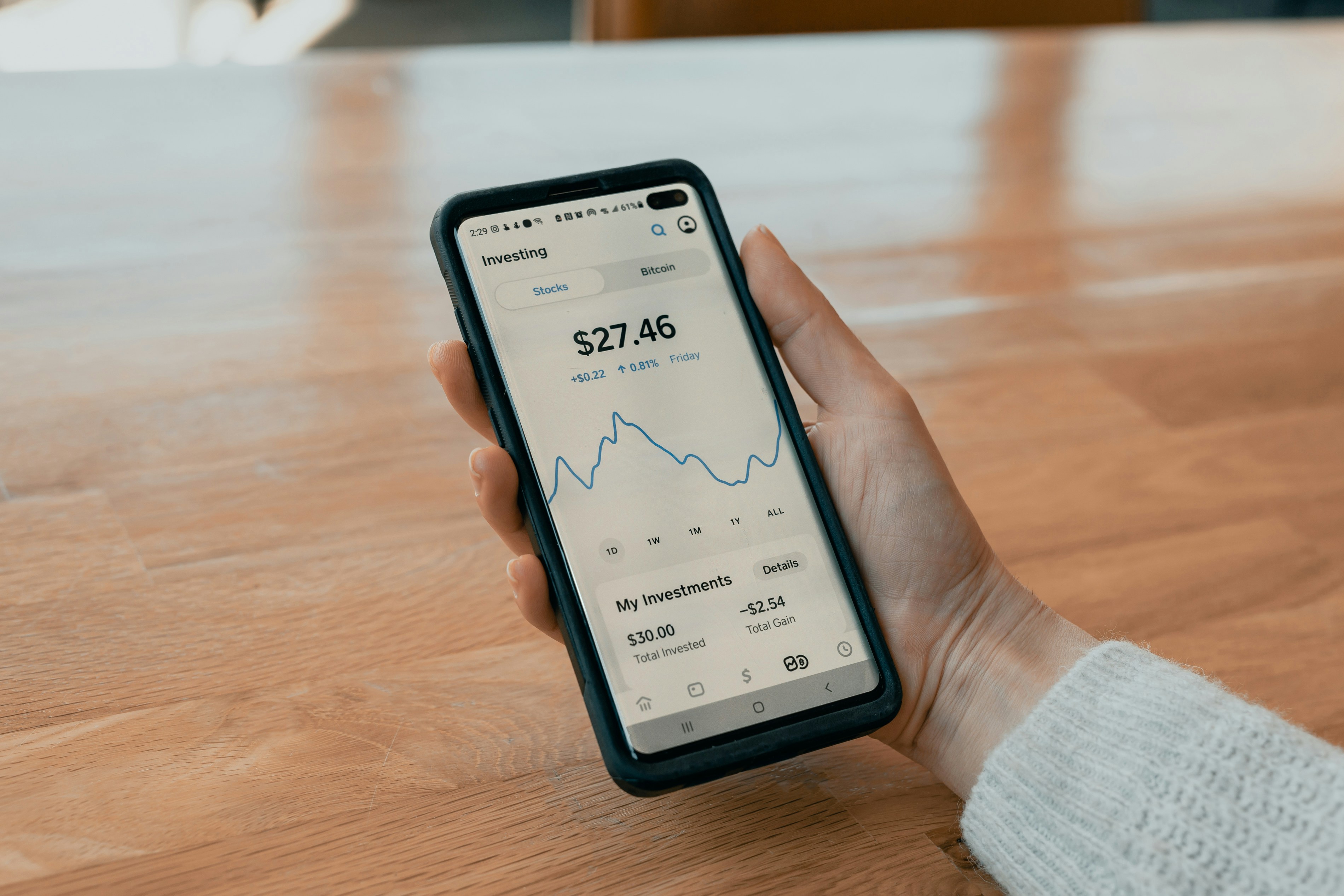Top 10 Best Free Tools to Track Your Spending
Introduction to Budgeting Tools
Tracking personal spending is an essential component of effective budgeting, serving as a fundamental practice for achieving financial stability. When individuals understand where their money goes, they can make informed decisions that align their spending habits with their financial goals. This awareness fosters better control over finances, encourages saving, and highlights areas where expenses can be reduced. Ultimately, maintaining a clear view of spending patterns equips individuals with the tools necessary to make sound financial choices.
In today’s digital age, technology has transformed the way we manage our finances. The emergence of budgeting tools has made monitoring expenses more convenient, efficient, and accessible to a wider audience. Free tools designed for personal finance management are readily available, allowing users to effectively track their spending without incurring additional costs. These resources provide individuals with the capability to analyze and understand their financial habits, reinforcing the importance of fiscal responsibility.
Among the myriad of free spending-tracking tools, there are options that cater to varying preferences and needs. Some tools offer simple tracking functionalities, while others provide comprehensive financial insights that help users identify trends in their expenditure. Additionally, many of these tools feature mobile applications, enabling individuals to track spending on-the-go and make real-time updates to their budgets. As a result, they are promoting a proactive approach to personal finance and encouraging users to stay engaged with their financial journey.
The rise of budgeting tools represents a shift towards a more informed and empowered approach to managing personal finances. By utilizing these free resources, individuals can develop healthier spending habits that contribute to their overall financial well-being, ensuring that they remain on track towards achieving their monetary goals.
Criteria for Selecting Spending Tracking Tools
When choosing a spending tracking tool, several key features should be taken into consideration to ensure that the tool effectively meets the user’s financial needs. Firstly, user-friendliness is paramount. A spending tracking tool should have an intuitive interface that allows individuals to navigate easily without confusion. The ease with which users can log transactions and track their spending habit is critical for maintaining consistent use and achieving financial goals.
Another essential aspect is the tool’s ability to integrate seamlessly with bank accounts and financial institutions. This integration not only automates the process of tracking expenses but also provides real-time insights into spending patterns. By connecting directly to bank accounts, users can receive live updates on balances and transactions, reducing the risk of overspending and ensuring accurate financial planning.
Customization options are also vital in a spending tracking tool. Different users have unique financial situations and preferences; therefore, the ability to tailor categories, set spending limits, and create budgets according to personal financial goals can significantly enhance the tool’s effectiveness. A versatile tool can adapt to diverse lifestyles, making it easier to manage diverse income streams and expenses.
A robust reporting capability is another feature that cannot be overlooked. Effective spending tracking tools provide comprehensive reports and visual representations of financial data. These insights enable users to identify trends in their spending habits, allowing for informed decision-making and strategic financial planning.
Lastly, mobile accessibility plays a crucial role in the modern financial landscape. A tool that is readily accessible on mobile devices empowers users to track their expenses on-the-go, ensuring that financial management is possible anytime and anywhere. Thus, when selecting a spending tracking tool, consider these features to ensure that it aligns with your personal financial objectives.
Tool 1: Mint
Mint has established itself as one of the leading free tools for tracking spending, offering a comprehensive suite of features designed to simplify personal finance management. The application enables users to create customizable budgets based on their income and spending habits, facilitating effective allocation of financial resources. By inputting their financial data, users can set spending limits in various categories, making it easier to adhere to financial goals.
One of Mint’s standout attributes is its real-time expense tracking capability. Users can link their bank accounts, credit cards, and other financial tools directly to the app, allowing transactions to be automatically imported and categorized. This continuous monitoring of expenses ensures that users are always aware of their financial standing, helping to curb unnecessary spending and improve their financial discipline.
In addition to real-time tracking, Mint provides detailed reporting features that allow users to visualize their financial health. These reports can display spending patterns, income sources, and areas where users may need to cut back. The application also sends alerts based on user-defined parameters; these notifications can inform users of upcoming bills, unusual spending activity, or budget overspending. Such proactive communication helps users stay on top of their finances and avoid common pitfalls.
Moreover, Mint’s integration with various financial institutions enhances its usability, as users can manage multiple accounts seamlessly from one platform. This centralization of financial data reduces the hassle of switching between numerous apps and improves the overall tracking experience. With its user-friendly interface and robust features, Mint serves as an exceptional tool for individuals looking to take control of their spending and enhance their financial well-being.
Tool 2: Personal Capital
Personal Capital is a comprehensive financial planning tool designed to assist users in managing their finances more efficiently. Unlike many other spending trackers that focus solely on budgeting, Personal Capital extends its services to include investment tracking and retirement planning, making it a well-rounded tool for those serious about their financial health.
One of the standout features of Personal Capital is its budgeting capabilities. Users can easily create and manage budgets by linking their bank accounts, credit cards, and other financial accounts. This integration allows for real-time tracking of spending habits across various categories, providing a clearer picture of one’s financial situation. The intuitive interface makes it simple for users to visualize their expenses and make necessary adjustments to their spending habits.
In addition to budgeting, Personal Capital offers a powerful net worth tracking tool. Users can see a comprehensive view of their net worth by including all assets and liabilities. This feature enables individuals to set financial goals and monitor their progress over time. With the ability to track investments, users can also analyze their portfolio’s performance and make informed decisions based on a wealth of analytic tools.
Furthermore, Personal Capital is particularly well-known for its robust retirement planning features. Users can simulate their retirement savings scenarios using the Retirement Planner, which helps individuals assess whether they are on track to achieve their retirement goals. This aspect makes Personal Capital stand out among free spending tools, as it combines daily financial management with long-term planning.
Overall, Personal Capital offers a free, multifaceted approach to tracking spending, investments, and retirement planning, making it an invaluable resource for anyone looking to bolster their financial future.
Tool 3: YNAB (You Need a Budget)
YNAB, which stands for You Need a Budget, is an innovative budgeting tool that emphasizes proactive financial management. Its core philosophy revolves around the concept of assigning every dollar a job, which encourages users to identify specific purposes for their income. This approach not only fosters a greater awareness of financial resources but also helps individuals make informed decisions regarding their spending habits.
One of the standout features of YNAB is its focus on planning for future expenses. Users are guided to anticipate upcoming costs, such as bills or special events, and allocate funds accordingly. This forward-thinking strategy enhances financial stability by ensuring that individuals are prepared for their financial commitments. With this technique, users can avoid the stress associated with unexpected expenses, ultimately promoting better money management.
While YNAB traditionally operates as a paid service, it offers a 34-day free trial that allows potential users to experience its capabilities firsthand. During this trial period, individuals can access the full suite of features, enabling them to deeply engage with the budgeting process without any financial commitment. Additionally, YNAB provides a range of educational resources tailored for beginners, including webinars, workshops, and an extensive knowledge base. These materials are instrumental in helping users understand budgeting principles and develop effective strategies for tracking their spending.
In summary, YNAB is a powerful tool for anyone interested in mastering their finances. Its proactive budgeting philosophy, coupled with the option of a free trial and educational support, makes it a valuable resource for individuals looking to gain control of their financial futures.
Tool 4: PocketGuard
PocketGuard is a budgeting tool that provides users with a unique approach to managing their finances by focusing on the concept of disposable income. This innovative tool simplifies the budgeting process by offering a clear view of how much money is available for discretionary spending after accounting for bills, savings goals, and necessary expenditures. This distinctive feature makes PocketGuard an exceptional option for those who want to enhance their financial awareness without feeling overwhelmed.
The user-friendly interface of PocketGuard is one of its standout characteristics. Designed to appeal to a broad audience, the application allows users to effortlessly navigate through various features. Upon setting up their accounts, users can link their bank accounts, credit cards, and other financial accounts. PocketGuard automatically categorizes transactions, making it easy to see where money is being spent and how it aligns with a user’s budget. This immediate insight into spending habits helps users identify areas where they can cut back or adjust their financial strategies.
One of the key benefits of PocketGuard is its ability to generate visual representations of spending patterns, which can be crucial for users trying to achieve financial goals. The app highlights recurring expenses and categorizes spending to provide a more comprehensive understanding of financial behavior. By focusing on the remaining disposable income, PocketGuard encourages users to make informed choices, thereby promoting mindful spending. Additionally, the tool can help users establish budgets tailored to their financial needs and aspirations, fostering a sense of control over their finances.
In conclusion, PocketGuard serves as an effective financial management tool that emphasizes disposable income while remaining user-friendly and accessible for various financial backgrounds. Its insights into spending habits empower users to take charge of their financial future.
Tool 5: GoodBudget
GoodBudget is an innovative digital envelope budgeting tool designed to help users manage their finances more effectively. This application adheres to the traditional envelope budgeting method, which involves allocating funds into different categories or “envelopes” for distinct spending purposes. By doing so, it empowers users to keep a close watch on their expenditures through a structured system. This approach not only aids in tracking expenses but also promotes a disciplined way of managing one’s budget.
With GoodBudget, users can effortlessly allocate funds to various envelopes, which can represent categories like groceries, transportation, entertainment, and savings. This digital solution allows for updates and adjustments as financial priorities shift, giving individuals the flexibility to adapt their budgets in real-time. Users can input their expenses directly into the application, and the app automatically deducts these amounts from the respective envelopes, offering a clear overview of available funds at a glance.
Another significant advantage of GoodBudget is its accessibility across mobile devices, making it convenient for users to track their spending on-the-go. This feature is especially beneficial for individuals who are frequently away from their computers and wish to maintain their budgeting efforts consistently. The mobile application synchronizes seamlessly, ensuring that all entries and updates are reflected in real-time, allowing for collaborative budgeting with family or household members as well.
In addition to expense tracking, GoodBudget encourages users to set financial goals by enabling them to allocate funds towards future savings or investments. This strategic feature helps in motivating users to reach their financial objectives. Overall, GoodBudget stands out as a highly effective digital envelope budgeting tool that can provide individuals with the necessary resources to manage their finances responsibly.
Tool 6: Wally
Wally is a user-friendly financial management app designed to assist users in tracking their spending effectively. With its intuitive interface, Wally enables individuals to manually input their expenses, ensuring that they maintain a detailed record of where their money is going. This hands-on approach allows for greater accuracy, as users have full control over their entries, providing a personalized financial overview.
One of the standout features of Wally is its ability to categorize expenses. By dividing spending into specific categories such as groceries, transportation, and entertainment, users can gain a comprehensive understanding of their financial habits. This categorization not only aids in identifying potential areas for savings but also facilitates more informed budgeting decisions. Users can easily see which categories consume the majority of their budget, allowing for adjustments as necessary.
Wally further enhances the expense tracking experience with its location tracking feature. When users input expenses, the app can automatically log the location where the spending occurred. This feature provides valuable insights into spending behaviors, enabling users to correlate their financial decisions with specific locations, like a regularly visited café or supermarket. By analyzing such spending patterns, users can make more strategic choices in the future.
Another pertinent feature is the comparison of budgeted versus actual spending. Wally allows users to set spending limits for each category and then tracks actual expenditures against these limits. This functionality is crucial for effective budgeting, as it empowers individuals to identify instances of overspending and adjust their habits accordingly. It fosters a proactive approach to personal finance, encouraging better financial discipline.
In conclusion, Wally stands out as a versatile tool for users looking to track spending while cultivating a deeper understanding of their financial landscape. Through its manual input, categorization, location tracking, and budget comparison features, the app provides an effective suite of tools to help users take control of their finances.
Tool 7: Clarity Money
Clarity Money stands out as a robust financial tool, specifically designed to assist users in managing their subscriptions and tracking recurring expenses. With the proliferation of subscription services, it has become increasingly challenging to keep tabs on regular outflows. Clarity Money addresses this concern by offering an intuitive interface that simplifies the tracking of these payments, enabling users to gain insights into their financial habits.
One of the key features of Clarity Money is its budget analysis capability. Users can view their spending patterns in a comprehensive manner, allowing them to identify areas where they may be overspending. By breaking down expenditures into categories, Clarity Money makes it easy for individuals to see the impact of their subscriptions on their overall budget. This functionality is particularly beneficial for users who subscribe to multiple services, providing a clear view of how these commitments affect their financial health.
Additionally, Clarity Money offers personalized financial insights that can help users make informed decisions. The app analyzes spending trends and suggests actionable ways to enhance savings. For example, if a user is consistently overspending in a particular category, Clarity Money may recommend reducing some subscriptions or reallocating funds to more essential expenses. This feature encourages users to take control of their finances by highlighting opportunities for improvement.
Moreover, Clarity Money’s user-friendly design facilitates seamless navigation through its various functionalities, making it accessible for individuals regardless of their financial expertise. By concentrating on recurring expenses, this tool can lead to significant savings and better budgeting strategies. In this way, Clarity Money not only tracks spending but also empowers users to make smarter financial choices.
Conclusion: Choosing the Right Tool for You
As we have explored in this blog post, the landscape of free tools available for tracking your spending is vast and varied. Each tool offers unique features that can cater to different financial needs and preferences. Understanding the core functions, usability, and compatibility of these tools enables you to make an informed decision tailored to your specific situation.
Some tools emphasize robust budgeting capabilities, while others focus on real-time tracking of expenditures. For instance, certain applications may excel in presenting visual reinforcements of your spending patterns or offering customizable alerts. Furthermore, the integration with bank accounts and credit cards can streamline the process of monitoring financial activity, making it easier to stay on top of your finances. Hence, assessing what is most important for your spending habits is crucial in determining the best fit.
Additionally, consider your financial goals. If you seek to curb unnecessary spending, then a tool that provides detailed insights into where your money goes may be beneficial. Conversely, if your aim is to save for a particular objective, you might want a tool that helps track savings toward that goal universally. Regardless of your situation, the right tracking tool can enhance your financial literacy and promote better spending habits. Utilizing these tools effectively can empower you to achieve greater control over your financial destiny.
In conclusion, take the time to evaluate your personal financial needs and align them with the functions offered by various spending tracking tools. Doing so not only aids in creating informed financial decisions but can significantly improve your overall approach to managing your finances responsibly. Remember, the journey to financial wellness begins with the right tools that resonate with your personal goals and spending behaviors.
Join Our Community
Stay connected with the latest updates, exclusive content, and be part of our growing community!



No Comments Yet